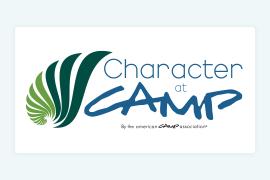Managing your summer camp requests doesn’t have to be stressful or overwhelming. You can set up a professional, streamlined system to help you process incoming requests and registrations. This approach can help you stay organized and give parents a good first impression of your camp.
These eight strategies can help you regulate and process incoming requests and registrations.
1. Publicize your camper enrollment criteria
Your marketing needs to put you in front of the right audience. To achieve this, make sure you’re targeting the right groups. One strategy that helps is to create clear camper enrollment criteria that you publicize on your website, social media, and advertisements.
You’ll be more likely to capture the attention of your target audience so that your marketing leads to signups.
2. Create an online summer camp registration form on your website and social media channels
To make the online registration process simple, put your summer camp registration form on your website and social media channels. When the documents are in prominent places, it’s easy for parents to go from learning about your camp to signing up in the moment, when they’re excited and have the time.
You can even incorporate a waitlist into your process. This can help if a camper has to drop out. It also lets you identify popular camps that you may want to offer more of in the future.
3. Store and manage incoming requests in a central database
Camp requests and registration don’t have to be stressful for you and your team. Setting up a central database to store and manage incoming requests can keep you organized and on track.
Having all information in one central database will make it easier to understand who your campers are, how people are registering, and more. You’ll also be able to process, store, and manage incoming requests and registrations more efficiently.
4. Create camp enrollment forms that are easy to use
If your camp enrollment process is complicated or tedious, many potential registrants won’t complete it. People don’t want to spend their time struggling with complex online forms.
To ensure a smooth experience, follow these tips:
-
Keep your forms short. Focus only on the information you really need. Keep questions simple and easy to read.
-
Make pricing easy to understand. You don’t want parents to be surprised by the cost after they’ve registered their children for your camp. Provide the details parents need in an easy-to-read format. Parents should be able to easily understand the different pricing options so that they can select the choice that works for them.
-
Give critical information about your camp. To make the process easy, provide the information parents need to confirm when enrolling their children in your camp. For example, give your camp’s general contact information, location, dates of sessions, a quick summary of sessions (including ages, if applicable), and camp leaders’ names.
5. Build your approval process for new campers
From reviewing all inbound requests to making sure you have the proper paperwork for each camper in case of an emergency, you need an approval checklist.
However, manually approving requests every time is not only inefficient but can also introduce a lot of errors.
Here are a few ways to automate this process:
-
Use Zapier to cut down on some of the manual and repetitive tasks. For example, you can avoid data entry by setting up a Zap to automatically send the information filled out on forms into your camper database.
-
Send automated reminder emails for people who have started but haven’t completed the camper registration process.
-
Use JotForm Approvals to manage the entire approval process, from accepting requests to managing and approving them. You can set up automated notifications for parents registering their children as well as reminders for those who need to approve the registrations.
6. Make it simple for parents to enroll multiple campers at the same time
Parents with multiple children often want to register their kids for the same camp at the same time. However, it can be time-consuming to fill out the same forms repeatedly for every child. As a result, parents can get bogged down in the process and may not complete the registrations in time.
To avoid this barrier, look for management software that allows parents to register multiple children in one registration transaction. Parents will appreciate the ease of your process, especially if they only have to pay once.
7. Build confidence with parents by using consistent branding and sharing your camper safety best practices
You can start building trust and confidence with parents the first time they learn about your summer camp. One strategy is to use consistent branding across all your content and forms to make it easy for parents to recognize your camp at a glance.
When your documentation, forms, and online presence aren’t connected, people can become confused. They may start to wonder whether they have the right camp or are completing the right forms. This can dissuade some potential customers. Your branding should focus on being professional, fun, and cohesive.
Another key strategy is to share how you keep campers safe. Your safety protocols should include all of the usual best practices as well as what you’re doing to prevent a coronavirus outbreak.
8. Incorporate camp evaluation forms to help increase camper retention
When developing your process, you can add aspects to help improve camper retention rates. One method is to incorporate evaluation forms during different stages of your camp experience.
Many camps send questionnaires to assess the campers’ and parents’ satisfaction with their experience once they’ve completed the camp, so they can learn what’s working and what isn’t. While this is a great tactic, you can also use evaluation forms to assess earlier stages of the parents’ experience interacting with the camp.
Include a satisfaction evaluation for parents about their experience with registration and customer service. Getting constructive feedback from parents sets a positive experience and can make them feel more comfortable. They will appreciate knowing you’re open to their input, are easy to communicate with, and pay attention to details of the overall camp experience.
***
You can provide parents with a professional experience by taking time to streamline the initial communication you have with them about your summer camp. Doing this can help build confidence and trust in your camp, and can help increase your camp enrollment.
This sponsored blog was provided by JotForm.
Photo by Priscilla Du Preez via Unsplash.
Periodically, the American Camp Association (ACA) makes timely and relevant information about products and services available to its members so they can make informed decisions for their camps. However, the ACA does not endorse products, services, or companies.




